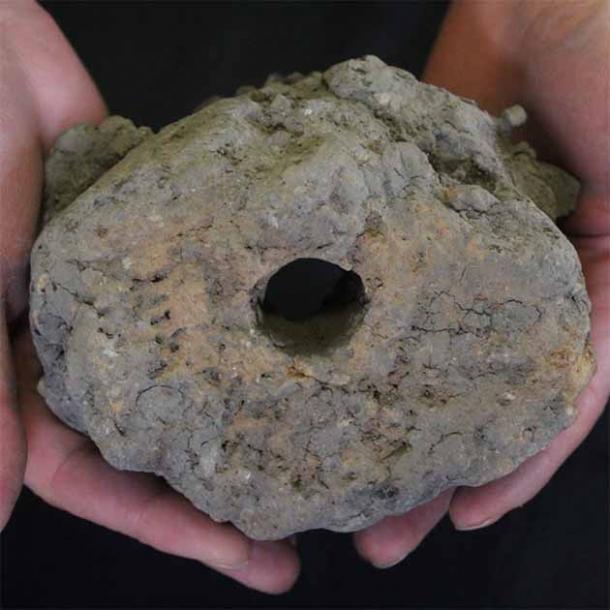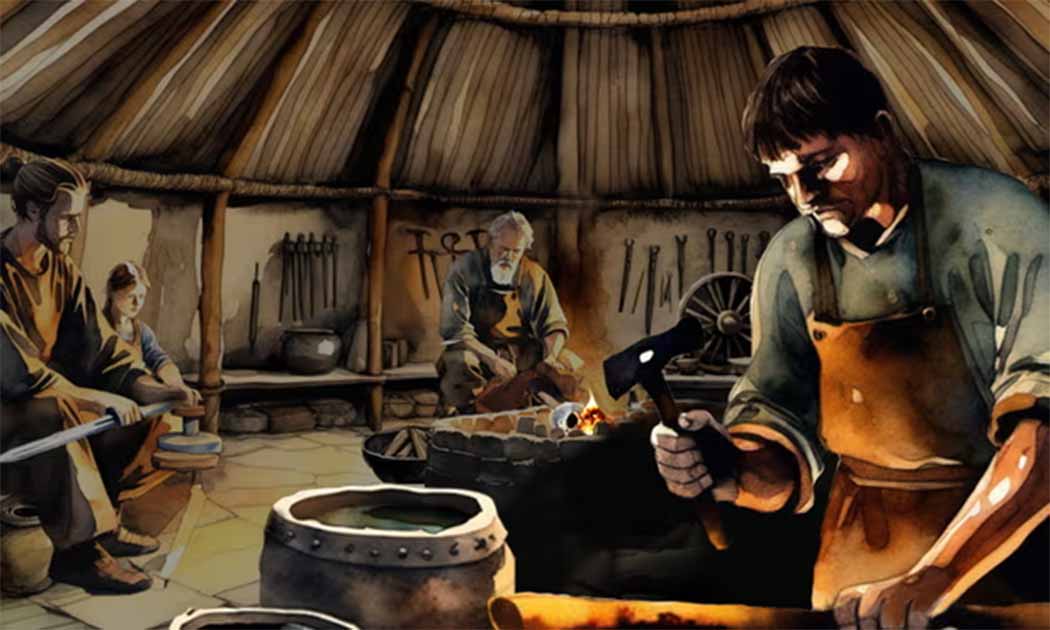Iron Age Blacksmith Workshop in the Oxford Countryside Reveals Master Craftsman
Researchers have been “completely blown away” by the uncovering of an Iron Age workshop belonging to a "master blacksmith" in the English countryside, complete with bellow protectors and small metal fragments created as red-hot iron was hammered into shape. Dating back approximately 2,700 years, the workshop, known as a "smithy," was unearthed during excavations in Oxfordshire, spearheaded by the excavation company DigVentures. Radiocarbon dating suggests that it was operational between 770 and 515 BC, marking the onset of the Iron Age in Britain.
- 2,800-year-old Hallstatt Swords Rewrite Bronze to Iron Age Technological Leap
- Iron Age Skull Suggests Sinister Story of Severed Heads Tossed into Wetlands

The area of Wittenham Clumps where the blacksmith workshop has been found. (DigVentures)
Excavating the Evidence: A Full-Fledgling Workshop
Nat Jackson, the site director of DigVentures, said of the latest finds to The Guardian:
“The range of evidence is remarkable. We’ve got almost every component of the blacksmith’s workshop … The only thing we haven’t found is the tools. It’s an incredible thrill to uncover something like this. It basically allows us to peer back in time and see what could have been one of Britain’s earliest master blacksmiths at work.”
The discoveries at the site include the footprint of the blacksmith building along with its internal structures, revealing evidence of a specialized hearth and iron bar used for crafting artifacts. In addition, an intact tuyere was unearthed, which served to channel air into the hearth while safeguarding the bellows from the intense heat of the flames.
- Iron Age Europe: 2000 Years Of Change Rolls Across The Continent
- Spiritual Marriage and Holy Virginity: The Medieval Practice of Sexless Marriage

An almost intact tuyere, the size of which suggests large objects were forged at the site. (DigVentures)
Gerry McDonnell, the archaeometallurgical specialist who examined the finds, said the intact tuyere - was one of the few known examples of its kind in Europe.
"The fact that it dates not just to the Iron Age, but to the first few centuries of ironworking in Britain, is remarkable. What's more, the size of it suggests we're looking at a hearth that was much larger and more specialised than that of your average village smithy. The fact that this early Iron Age blacksmith had a specialist tuyere shows us this was much more likely to have been a serious operation by a highly skilled, elite, or master blacksmith,” he explained to the BBC.

Excavation work at the Wittenham Clumps site started in 2018. (DigVentures)
This ‘smithy’ was not your average workshop; it was a hub of exceptional craftsmanship, with everything from swords to chariot wheels brought to life here. This skilled producer crafted a wide array of high-quality items, showcasing mastery in ironworking techniques and catering to the demands of their clientele.
Maiya Pina-Dacier, an archaeologist with DigVentures, explained:
“This is a rare glimpse of a master craftsperson at work from such a pivotal point in time – the arrival of ironworking in Britain… You’d need a big hearth if you’re producing something large or long, and those things in the Iron Age are swords and cartwheels. Those kinds of artifacts could only be produced by the crème de la crème of smithies. This workshop was a very serious blacksmithing operation.”
This Iron Age settlement was characterized by a cluster of roundhouses and an Iron Age pantry. Evidence of ceremonial or ritual activities, such as animal burials, was gleaned, along with the discovery of a later Roman villa within the vicinity, from where the remains of a small Roman pet dog were found, reports The Smithsonian.
The Iron Age in Britain: The Profound Impact of the Metal
The Iron Age in the British Isles is typically identified as spanning from around 800 BC to the Roman invasion in 43 AD. During this period, the arrival of European peoples, later referred to as Celts, introduced iron-working technology to Britain. By 500–400 BC, the utilization of iron artifacts had become widespread across the British Isles, gradually supplanting the use of bronze. This transition marked a significant technological advancement and cultural shift, shaping the material culture and social dynamics of the region.
“Iron was stronger and more plentiful than bronze, and ironworking revolutionized many aspects of life, most importantly agriculture,” according to the University of Warwick.
DigVentures is an archaeology social enterprise, which made the discovery during an exploration of the area downslope from the Iron Age hillfort at Wittenham Clumps, a prominent landmark in South Oxfordshire. In 2021, the team uncovered the remnants of an extended Iron Age settlement, featuring the remains of roundhouses dating back to 400-100 BC.
The finds will go live on display on 17th and 18th February during the ‘Festival of Discovery’ at the Earth Trust Visitor Center.
Top image: A computer generated image of what the iron age workshop might have looked like. Source: DigVentures
By Sahir Pandey
References
Alberge, D. 2024. ‘Forging new history’: high-end iron age smithy unearthed in Oxfordshire. Available at: https://www.theguardian.com/science/2024/jan/28/high-end-iron-age-smithy-oxfordshire-blacksmith.
Anderson, S. 2024. Archaeologists Discover a ‘High-End’ Blacksmith’s Iron Age Workshop. Available at: https://www.smithsonianmag.com/smart-news/archaeologists-unearth-a-master-blacksmiths-iron-age-workshop-180983702/.
Manuschka, J. 2024. Ancient blacksmith's workshop discovered by archaeologists in Oxfordshire. Available at: https://uk.news.yahoo.com/ancient-blacksmiths-workshop-discovered-archaeologists-050000893.html?_guc_consent_skip=1706945142.
Stafford, S. 2024. Wittenham Clumps dig reveals Iron Age blacksmith workshop. Available at: https://www.bbc.com/news/uk-england-oxfordshire-68132743.

















